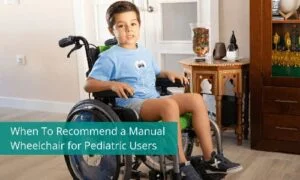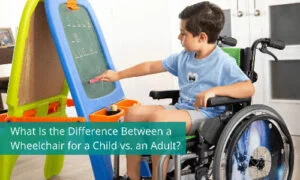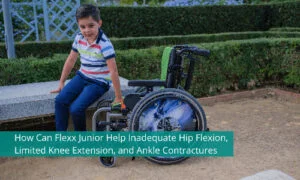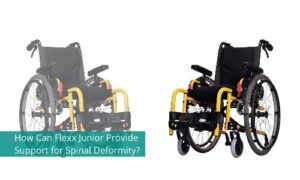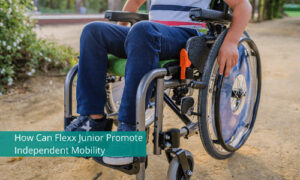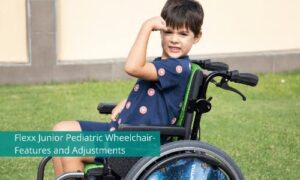Some pediatric wheelchair users may need extra support when it comes to not only their mobility but also their day-to-day function.
There are three common postural issues that pediatric patients often face:
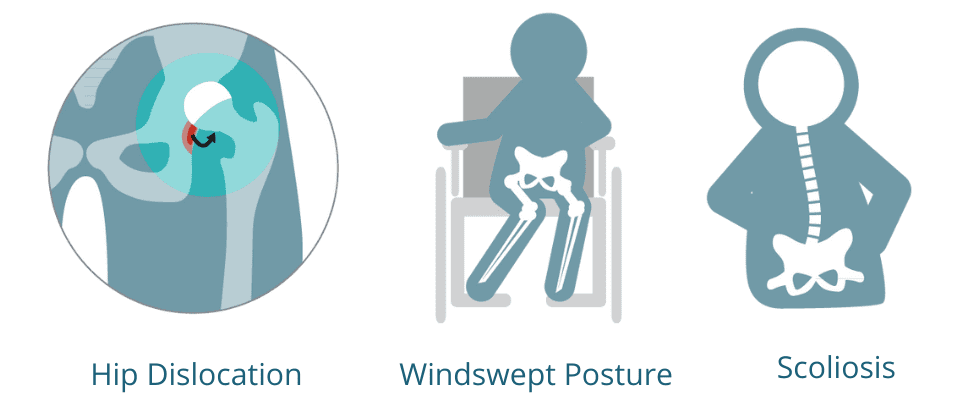
Hip Dislocation (Subluxation)
At birth, the hips are not fully developed. Through standing and weight-bearing activities, the hip joints start to form. However, children with disabilities who lack these experiences won’t have the chance to form the proper hip joints so they are more susceptible to popping out.
To counteract this from happening, studies have shown that if the user keeps their legs open ( and the hip joints open (abducted)) it will enhance the hip integrity. So sit children with their legs abducted. What does that mean when looking for a wheelchair?
To allow the user to sit with their legs abducted, the wheelchair needs to be wider at the front but narrow at the back to support the user’s posture, keep this in mind when choosing a wheelchair.
Windswept Posture
The windswept posture is another commonly seen issue in children with disabilities.
A lot of the time, a windswept posture is developed during sleep. Often their disability has caused the child’s muscles to develop abnormally so when they sleep, they don’t have the strength to reposition themselves so they stay in the windswept posture whilst sleeping. The solution for windswept posture is 24-hour postural care management.

24-hour positioning means providing children with the correct posture support not only when they are in the wheelchair but also when they sleep.
[Disclaimer: talk to your child’s therapist about the best way to provide the proper support for your child.]
As part of the 24-hour positioning management, the user also needs a suitable wheelchair that can adjust to accommodate their windswept deformity. The pelvis and trunk should be kept symmetrical as much as possible with adjustments made to accommodate the windswept legs and support an upright posture. The reason that we put so much emphasis on having a symmetrical pelvis is to protect the internal organs which can also contribute to their swallowing, breathing, and safety.
If adjustments aren’t made for users with a windswept posture, it could lead to scoliosis.
Scoliosis
An estimated 65% of scoliosis cases are idiopathic, about 15% are congenital, and about 10% are secondary to a neuromuscular disease. Secondary scoliosis can lead to a loss of muscular support for the spinal column so that the spinal column is pulled in abnormal directions.
Therefore, Scoliosis can be a result of when there is no early intervention to keep a symmetrical body posture. Mild scoliosis does not typically cause problems, but more severe cases can affect breathing and movement.
Always consult your child’s therapist
If a child has special seating requirements then it is always best to consult a doctor or therapist to choose the right wheelchair to fit them and their needs. A professional will also plan for early intervention to prevent other conditions later on in life.
You can check out the full range of KARMA wheelchairs and find out more about our unique power functions on the KARMA website.
Keep Reading

 Global
Global